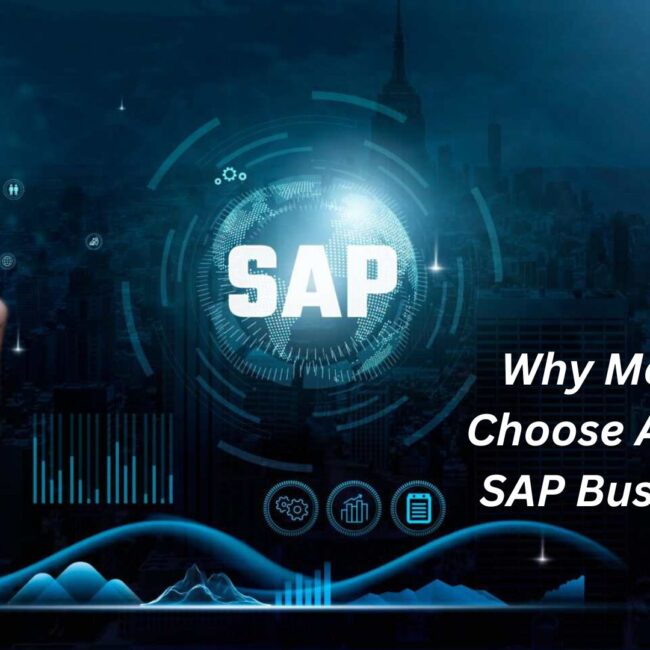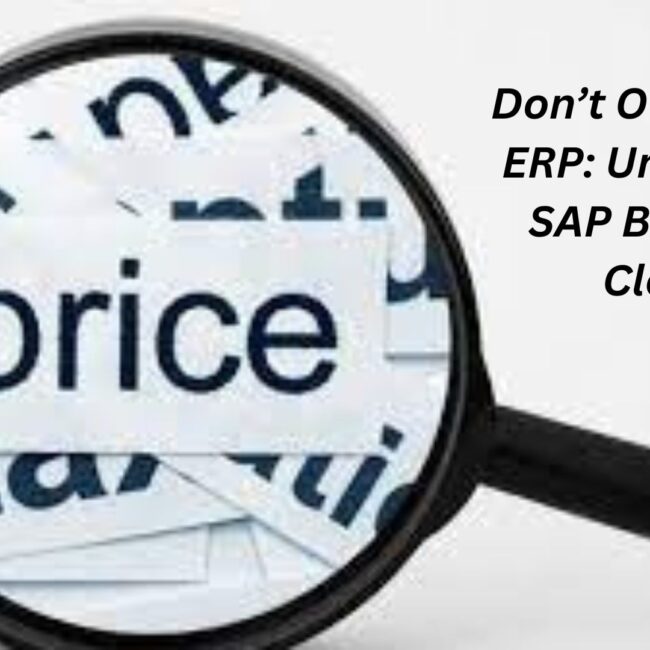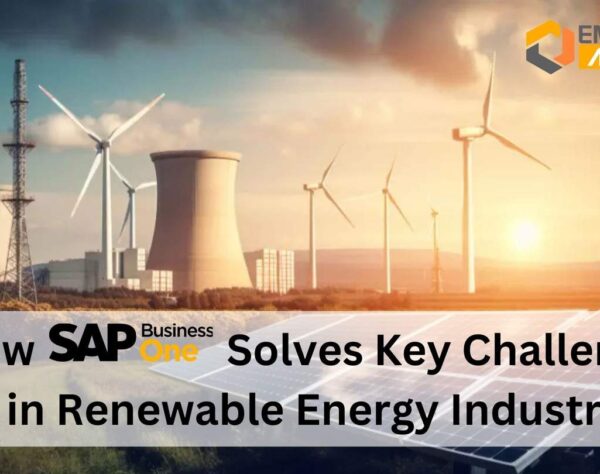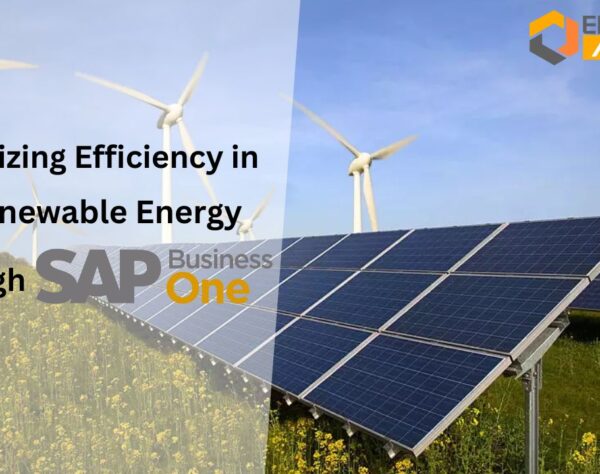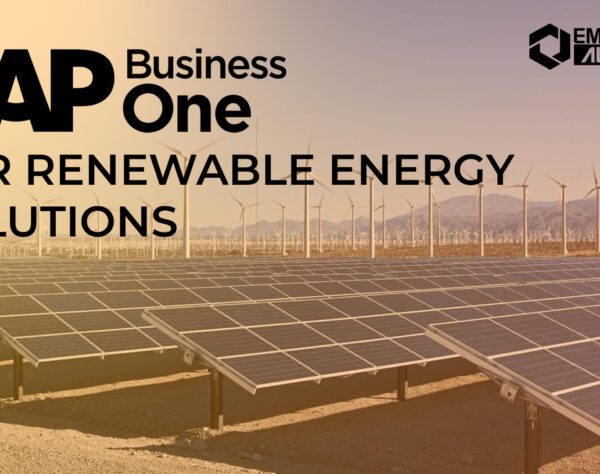Drive Circular Economy Success in Renewable Energy with SAP B1
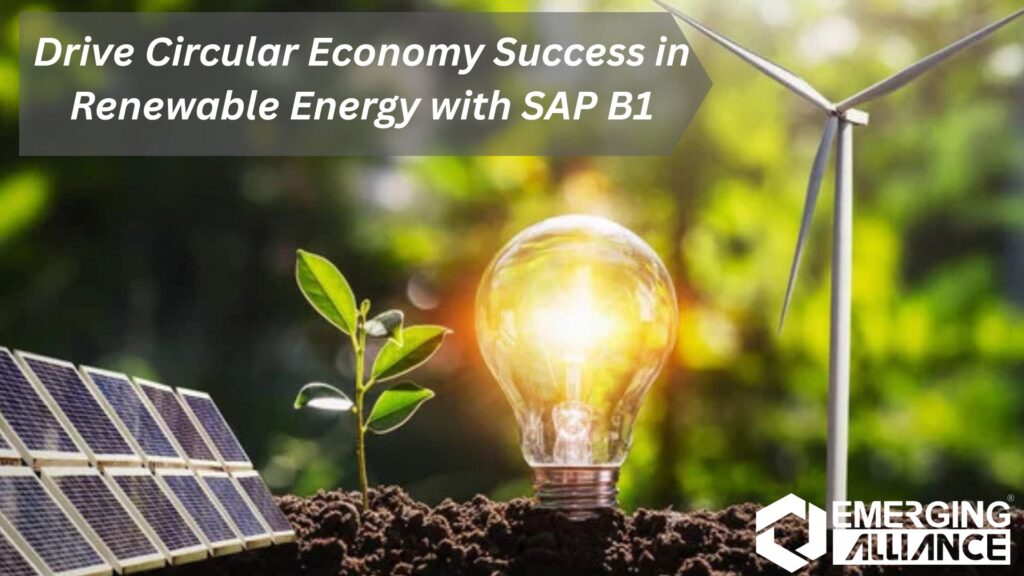
Support Circular Economy Goals of Renewable Energy Industry with SAP Business One
In today’s sustainability-driven world, Renewable Energy Industries are under pressure to do more than just produce clean energy—they’re expected to minimize waste, extend asset life, and close the loop in their operations. This is where SAP Business One (SAP B1) plays a transformative role.
Whether you’re managing wind turbines, solar panels, or biofuel equipment, SAP B1 helps you align your operations with circular economy principles—reducing resource usage, increasing recycling, and improving long-term efficiency.
♻️ What Is the Circular Economy in Renewable Energy?
The circular economy is a model focused on reuse, recycling, and resource optimization rather than the traditional “take-make-dispose” approach. For renewable energy companies, this means:
- Extending equipment lifespan
- Reducing waste in production and maintenance
- Creating sustainable supply chains
- Tracking material recovery and reuse
- Enhancing asset and spare parts lifecycle
🔧 How SAP Business One Supports Circular Economy Practices
1. Asset Lifecycle Management
SAP B1 allows you to monitor asset wear-and-tear, schedule preventive maintenance, and make data-backed decisions on refurbishing vs. replacing—ensuring your turbines, solar panels, or biofuel systems run longer and smarter.
2. Inventory Optimization and Waste Reduction
With real-time inventory tracking and expiry alerts, SAP B1 helps avoid overstocking and underutilization. Scrap and material losses can be logged, tracked, and reduced systematically.
3. Supplier Collaboration for Sustainable Sourcing
SAP B1’s procurement and vendor modules allow you to prioritize eco-conscious suppliers, automate purchase tracking, and ensure materials meet environmental standards.
4. Closed-Loop Material Tracking
Use batch and serial number tracking to monitor parts from acquisition to reuse or recycling. SAP B1 enables traceability that supports reverse logistics and circular supply chains.
5. Carbon & Resource Reporting
Integrate SAP B1 with environmental dashboards to report on carbon emissions, water usage, and material recovery—essential for ESG compliance and sustainability audits.
⚡ Real-World Application: SAP B1 in Solar Panel Recycling
A solar EPC firm used SAP B1 to:
- Track component usage across multiple projects
- Identify reusable parts from decommissioned panels
- Automate reports on recycled vs. discarded materials
- Reduce material purchase costs by 12% in one year
✅ Key Benefits of SAP B1 for Circular Economy in Renewables
- 📦 Minimize material waste
- 🔄 Enable product reuse and recycling
- ♻️ Reduce carbon and resource footprint
- 🔍 Improve traceability across the value chain
- 📊 Generate automated ESG and compliance reports
📌 Final Thoughts
Supporting a circular economy isn’t just good for the planet—it’s smart business. With SAP Business One, renewable energy companies can move from linear to circular operations while improving efficiency, reducing costs, and staying compliant with evolving sustainability mandates. SAP B1 isn’t just an ERP—it’s your sustainability enabler.
Also read, similar articles that interests you on SAP Business One for Renewable energy Industry.
FAQs
1. What is a circular economy in renewable energy?
A circular economy focuses on reducing waste, reusing materials, and extending the life of assets.
2. How can SAP B1 help support circular economy goals?
SAP B1 tracks assets, reduces waste, and improves reuse and recycling through better data and process control.
3. Can SAP B1 help reduce material waste in solar and wind projects?
Yes, it manages inventory efficiently and helps avoid overuse or unnecessary disposal of materials.
4. Does SAP B1 support recycling processes?
Yes, SAP B1 can track parts and materials for reuse or recycling through batch and serial number tracking.
5. Is SAP B1 suitable for small renewable energy companies?
Yes, SAP B1 is designed for small to mid-sized businesses and is cost-effective for clean energy startups.
6. How does SAP B1 improve asset management in renewable projects?
It helps monitor asset usage, plan preventive maintenance, and extend equipment lifespan.
7. Can I track my carbon footprint using SAP B1?
Yes, with custom dashboards and integrations, SAP B1 can help you monitor and report emissions.
8. Does SAP B1 help in choosing sustainable suppliers?
Yes, SAP B1 allows you to evaluate and manage eco-friendly vendors through its procurement module.
9. Is SAP B1 useful for managing multiple renewable projects?
Absolutely, SAP B1 handles multi-project costing, resource planning, and performance tracking.
10. How does SAP B1 help with sustainability compliance?
It automates data collection and generates reports for ESG, carbon audits, and green certifications.
💡 Ready to transform your Renewable Energy Industry Operations with SAP Business One? Contact us today!


